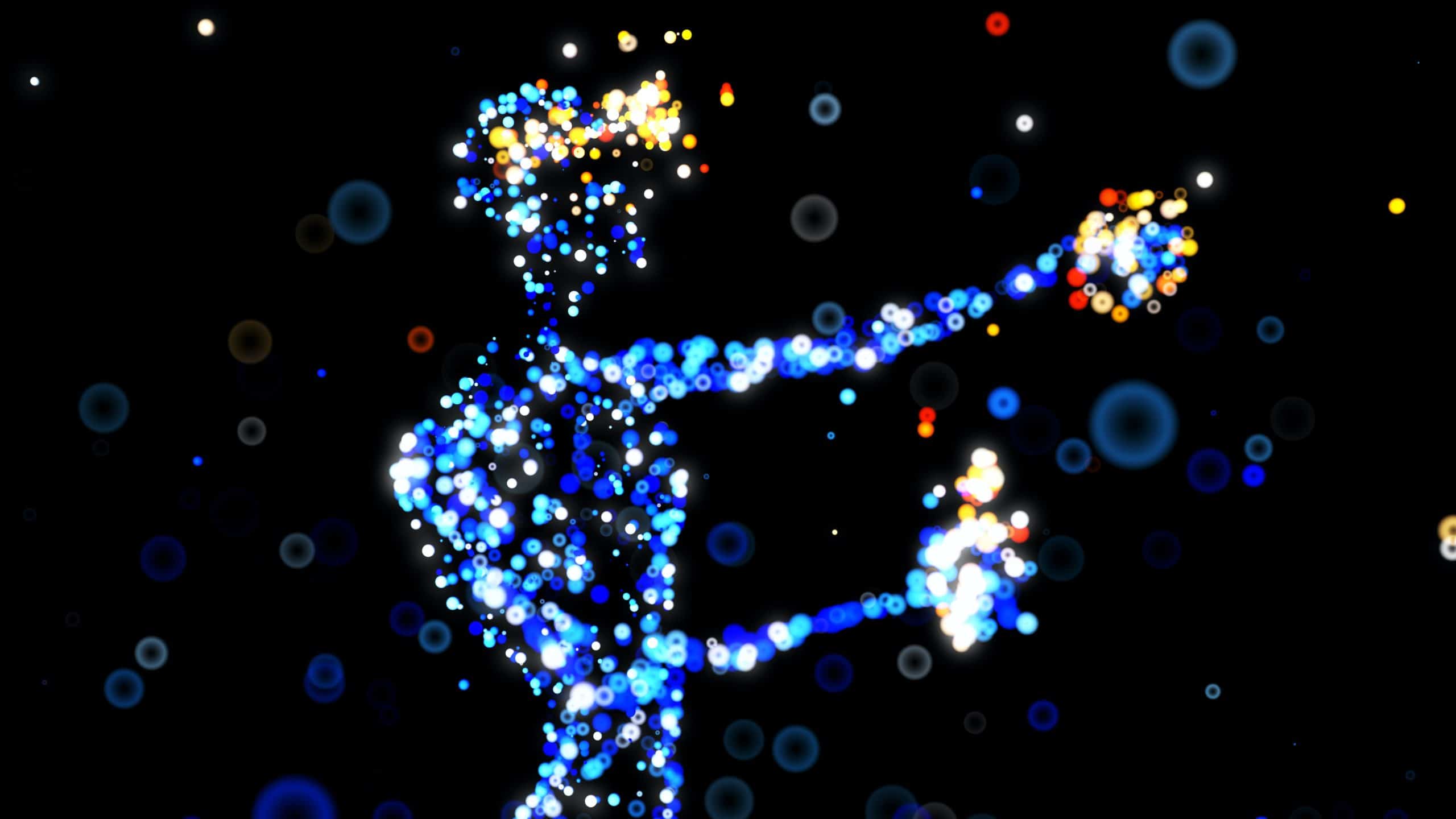Creating solutions for VR

In our previous blog, we talked about our experience with off-the-shelf VR solutions in our daily work. Taking things to the next level, we’ve explored how to develop new and better experiences in VR. We want to share some of our insights.
First, let’s define virtual reality (VR). It is an artificially created environment that does not represent your actual surroundings, that users can access with specific devices. VR can mimic real places or create completely fictional surroundings that the user ‘accepts’ like a real environment.
New ways to interact
VR provides new ways to interact, and for the solution’s creators, the challenge is to ensure interaction remains intuitive. Our guiding principle here is not to simply do something because we can. We do it because we should.
From 2D to 3D interaction
We use computers and smartphones with some combination of “windows, icons, menus, pointer” interaction (WIMP). When we move to VR there is a significant transition from the interface we are all used to. Not only changing from a two-dimensional environment to 3D but also how we interact with various virtual elements.
In VR the experience is immersive. There is a perception of being physically present in a virtual (non-physical) world. 3D interaction is built on that immersion. The main challenge when creating intuitive interactions in VR is to combine our real-world interactions with a virtual world. Solutions need to adapt our natural and familiar interactions, which we have used since we were born. VR devices, available today, lack capabilities like tactile feedback and need to adapt with a minimal sacrifice to familiarity.
Rules of gestures
In VR, gestures are basic interactions, e.g., hand movements with or without controllers. Smartphones and tablets have taught us how to use gestures to interact with solutions in 2D. When the smartphones became popular with their touchscreens, we adapted to two-finger gestures like pinch and zoom to make the subject matter larger. When designing gesture-based interactions for VR interfaces, they need to resemble real-world interactions. If it sounds straightforward, it isn’t. Interactions in the real world are a combination of physical laws, ergonomic movements of our hands, and are also culturally dependent. All these aspects need to be considered when designing intuitive gestures for interaction that will be easy to adopt.
Limitations and opportunities of VR interaction
Another critical aspect is the interactions with virtual elements and assets in the virtual world which are very different from what we are used to. For example, selecting and holding objects in a 2D interface are typically done by pointing and holding a button down with a mouse. In the virtual world, selecting objects is closer to real-world interaction, like using own hand to grab and pick up. This gesture is not as binary as using a mouse, instead, it can have multiple variations and flavors. Current mainstream virtual devices lack the tactile feedback that exists in the real world. The absence of tactile feedback can be replaced with visual and audio feedback. And while it’s easy to look at this as a limitation, we should see this as an opportunity. In VR, pointing at an object can be combined with enlarging, or highlighting it. In other words, in VR, your hands have superpowers to pull objects closer, and your fingers can be used as laser pointers.
VR in real use
Know the maturity of your market
When ideating VR use-cases, expectation management is important. There is a lot of hype around VR, and the general public’s expectations tend to spiral toward the unrealistic, often influenced by fiction. It is understandable as the tech companies portray their devices and the future with almost limitless possibilities.
In the market entry, timing is everything
There are devices with different capabilities in the market and they are fit for different purposes. Resolution is just one of the aspects to consider but let’s use that as an example. For example, Oculus Quest 2 resolution per eye is 1832 × 1920. This resolution is excellent for virtual meeting use cases but not enough for use cases requiring more details. On the high end of the spectrum, Varjo VR-3 headset provides “human-eye resolution”, which will be perfect for solutions requiring details. I have personally had the pleasure of using both devices, and the difference is quite striking. In addition to resolution, there is also a huge variation in other functionality, such as sensors, connectivity, and computing capacity. Naturally, these all impact the cost, and therefore their viability for different use cases.
For our service creation ambitions, the capabilities of today’s devices may feel limiting but they’re the realistic foundation for our work. What we can do is to consider the opportunities and limitations of the available devices for the intended use cases. Oculus is impressive for virtual meetings where you are not dependent on high resolution. For a solution requiring details, the Varjo devices are the more feasible option, when the cost structure makes it economically viable. If the use-case cannot carry the required HW cost, we would not recommend developing a solution until the costs subside. At least, do it with realistic expectations that you’re launching a beta, or SDK, not an MVP. If your solution doesn’t provide a better experience with VR or add value in some other way, it’s unrealistic to expect your users to adopt it.
The next steps on the VR path
The gaming industry has taken significant steps to advance VR. According to Fortune Business Insight in its report, Virtual Reality (VR) in Gaming Market, 2021-2028., the global virtual reality in the gaming industry was valued at $6.26 billion in 2020. The market is projected to grow to $53.44 billion in 2028 at a CAGR of 31.4% in the 2021-2028 period.
The next steps on the VR path are in development, which we will address in our follow-up blog(s). Most developers are used to 2D assets and are familiar with developing for 2D environments. Luckily, we have a gaming industry that has been using the 3D approach on 2D planes for a long time, and we are able to use their learnings.
The coming years are not only about devices being developed, but also the infrastructure. 5G is one of the most interesting examples of this. It can transform the storage and processing power from the device into the edge and cloud by providing extremely low latencies and high bandwidth. This will significantly improve VR devices’ power consumption and also the computing power for VR applications.
VR is constantly developing and there are still many opportunities. In addition to creating solutions for VR, the Avalon CX team keeps up to date by using VR solutions daily for internal interactions, like team meetings.
Contact us if you want to start or accelerate your VR journey. We can help you research and design the first steps or accelerate your current execution.
